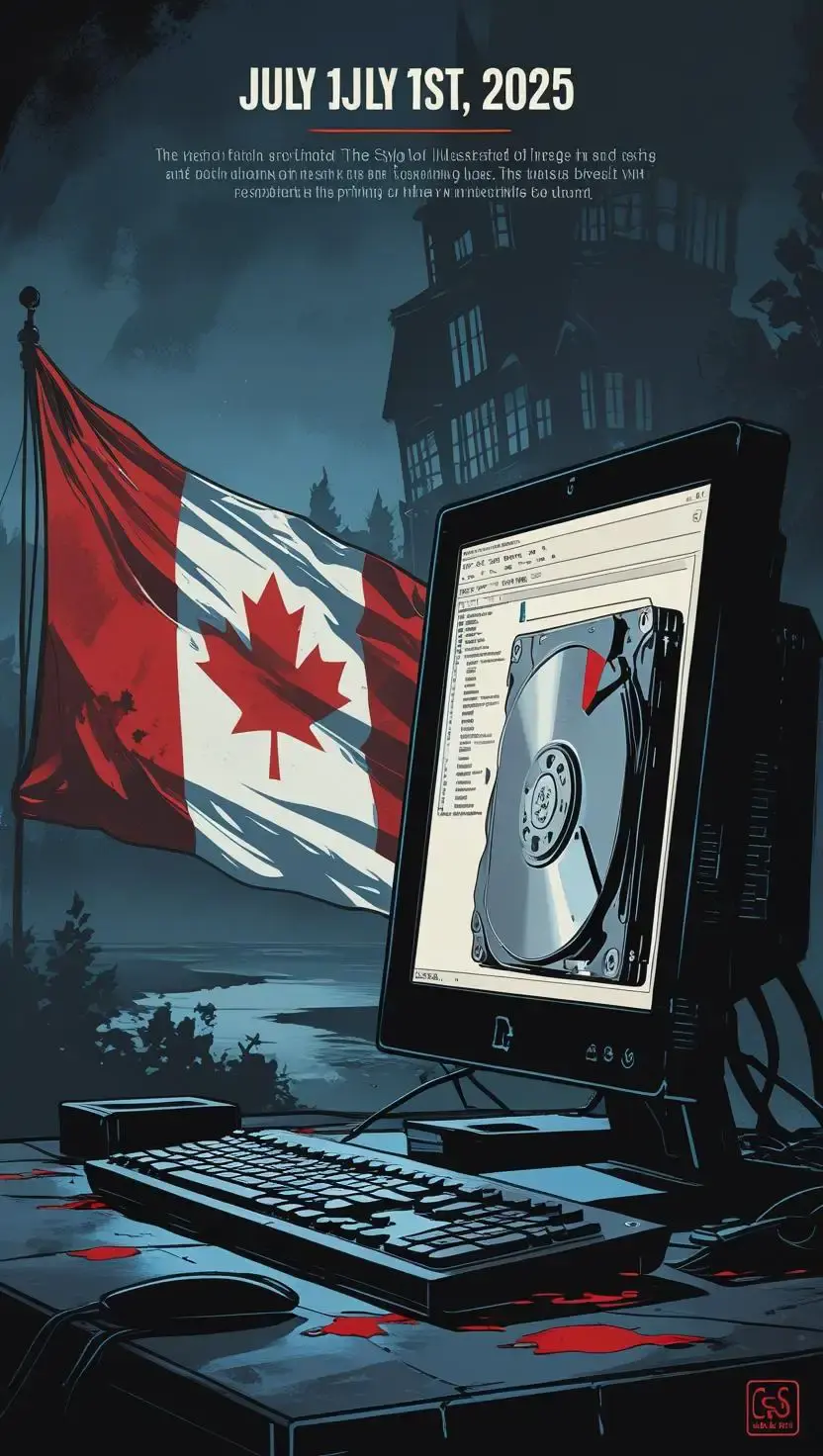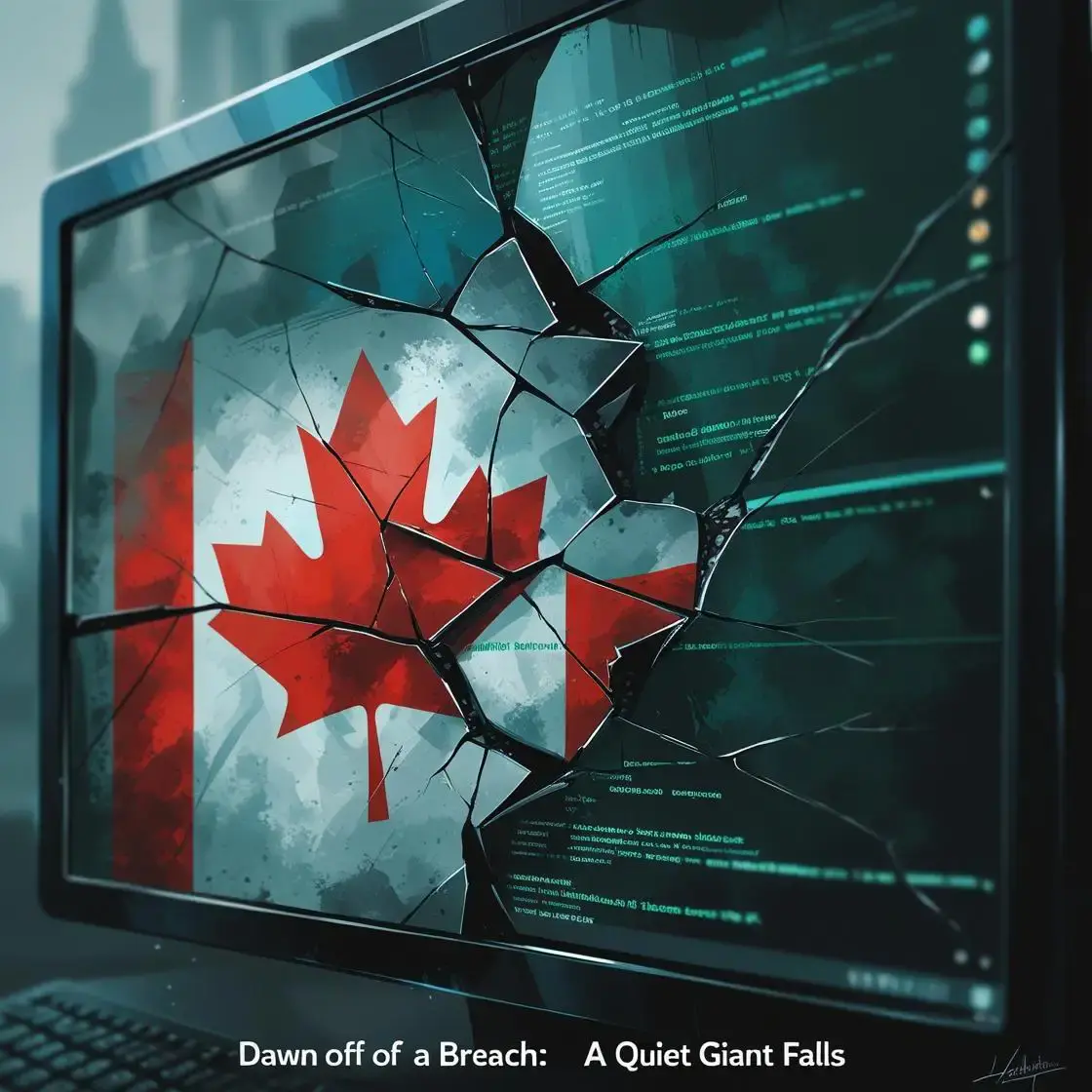
Broken Seals and Stolen Secrets: The Print House Breach That Shook the Industry
Dawn of a Breach: A Quiet Giant Falls

In the still hours of July 1st, 2025, just before office lights flickered on and inboxes began to hum, a storm swept quietly into the digital corridors of The Printing House—one of Canada's oldest and most respected providers of customized print and business communication services. For over 60 years, it has served a wide range of sectors with everything from secure document printing to marketing collateral.
Their offerings include:
Business cards, brochures, and promotional materials
Custom signage and branded packaging
Secure document printing for legal, financial, and healthcare clients
Large-format printing for events and retail displays
Crucially, The Printing House is also known to have worked with governmental and institutional clients, providing secure print solutions for sensitive documentation. That makes this breach not just a corporate crisis, but a potential public-sector liability.
The attacker? A ransomware group known as Dunghill, affiliated with the Dark Angels Team—a name that has become synonymous with data-leak extortion and public shaming. Their tactics are cold, calculated, and devastatingly effective.
By 07:23 AM, the breach was underway.
According to ransomware.live, Dunghill infiltrated the company’s systems and exfiltrated a staggering 2.2 terabytes of data. The stolen material includes:
800 GB of internal email communications, with attachments such as NDAs, financial records, HR files, and client data
600 GB of core databases, reportedly containing sensitive operational and customer information
Hundreds of gigabytes more from internal file servers, including IT infrastructure diagrams, business agreements, and confidential documents under NDA
The data has reportedly been made available for public download, marking a full-scale double extortion event.
For a company built on trust, discretion, and professional confidentiality, this was a digital arson—precise, merciless, and deeply personal.
Anatomy of an Exploit: How the Defenses Fell
As of now, The Printing House has not issued any public confirmation of the breach. No official statement has been released on their website or through verified media channels. This silence leaves clients, partners, and the public relying solely on threat intelligence sources like ransomware.live and cybersecurity monitoring platforms to piece together what happened.
While the exact method of intrusion remains unconfirmed, historical patterns from Dunghill and its parent group, Dark Angels, offer a chillingly familiar blueprint. These groups are known for:
Initial access via phishing or credential theft: Often targeting employees with convincing emails to harvest login credentials or deploy malware.
Privilege escalation and lateral movement: Once inside, attackers move laterally across systems, escalating access to reach sensitive infrastructure.
Data exfiltration before encryption: Dunghill typically exfiltrates large volumes of data before deploying ransomware, enabling double extortion.
Public exposure via leak sites and Telegram: Victims who refuse to pay are listed on their leak site, and data is sometimes distributed via Telegram channels.
In previous attacks, such as the one on Dutch chipmaker Nexperia, Dark Angels used a combination of stolen credentials and unpatched vulnerabilities to breach internal systems. Once inside, they encrypted data and threatened public exposure unless a ransom was paid.
In this case, the attackers claim to have exfiltrated 2.2 terabytes of data, which they have made available for download. That level of access suggests a prolonged presence inside the network—possibly weeks—before detection.
With no official confirmation from The Printing House, and no indication of whether law enforcement or cybersecurity firms have been engaged, the full scope of the breach remains murky. But one thing is clear: this was not a smash-and-grab. It was a methodical, multi-stage operation designed to inflict maximum reputational and operational damage.
Fallout and the Road Ahead

As The Printing House remains publicly silent, the consequences of the ransomware attack orchestrated by Dunghill are rapidly unfolding in the court of public opinion, regulatory scrutiny, and client trust.
The leak of 2.2 terabytes of sensitive data—now available for public download, according to ransomware.live—has turned a quiet security breach into a multi-dimensional crisis. What began with 800 GB of employee emails and 600 GB of critical databases has escalated into an existential threat for a company once regarded as a reliable partner to public and private clients alike.
Though the company is not classified as critical infrastructure, its deep involvement with governmental and institutional clients has put a harsh spotlight on how trust and data flow beyond federal firewalls—and into the hands of third-party vendors. That very reality lies at the heart of Canada’s pending legislation, Bill C-26, the Critical Cyber Systems Protection Act (CCSPA).
Bill C-26 aims to strengthen the cyber resilience of key sectors by requiring operators to implement structured risk management frameworks, disclose breaches immediately, and harden their defenses. While The Printing House may sit outside the initial list of designated entities, this breach sends a clear signal: when a vendor handles sensitive institutional data, the line between "critical" and "adjacent" infrastructure starts to blur.
This incident could very well serve as a case study for broadening the scope of Bill C-26. The breach is not just a violation of confidentiality—it’s a structural fault line in Canada’s cybersecurity landscape.
And as regulators, clients, and media await answers, the absence of an official statement only magnifies the vacuum of trust. For now, the story is being written by threat actors, watchdog sites, and speculation.
It’s a narrative The Printing House may soon find itself racing to reclaim—if not for itself, then for the fragile web of trust it was once entrusted to protect.
Recovery, Reckoning, and the Cost of Silence
As the dust settles over the breach at The Printing House, the financial and operational toll is beginning to take shape—though the full cost may not be known for months. With 2.2 terabytes of sensitive data exfiltrated and made publicly available by the ransomware group Dunghill, the company now faces a multi-front crisis: legal exposure, reputational damage, and the staggering cost of recovery.
Estimated Financial Losses
While The Printing House has not disclosed any figures, industry benchmarks offer a sobering estimate. According to global ransomware impact studies:
Average cost per breached record in Canada is estimated at $250–$300 CAD, depending on sensitivity and regulatory exposure.
With the volume of data involved, the total financial impact could exceed $10–15 million CAD, factoring in:
Incident response and forensic investigation
Legal counsel and regulatory fines
Client attrition and contract terminations
System restoration and infrastructure hardening
Potential ransom negotiations (if any occurred)
This figure does not include long-term brand erosion, which can depress revenue for years—especially for a company whose core value proposition is trust.
How Cy-Napea® Could Have Prevented It

The breach also raises the question: could this have been prevented?
A platform like Cy-Napea®, developed by Aurora Consolidated Ltd., offers a multi-layered defense strategy that directly addresses the tactics used by groups like Dunghill:
Endpoint Detection & Response (EDR) and Extended Detection & Response (XDR) to detect lateral movement and privilege escalation
Anti-ransomware modules to block encryption attempts in real time
Data Loss Prevention (DLP) to monitor and restrict unauthorized data exfiltration
Security Incident Management with automated alerts and forensic logging
One-click recovery to restore infected systems from clean backups
NIS2/Bill C-26 compliance modules, including vulnerability assessments and secure backup protocols
Had such a system been in place, it’s likely the breach could have been detected earlier—or even prevented entirely through proactive threat hunting and containment.
Disclosure and the Silence That Followed
As of this writing, The Printing House has not issued a public statement acknowledging the breach. No press release, no customer advisory, no regulatory filing. This silence stands in stark contrast to the transparency expected in the wake of such a significant incident—especially one involving potential exposure of governmental and institutional data.
In the absence of disclosure, the narrative has been shaped by third-party sources, including:
ransomware.live – which first reported the breach and detailed the leaked data
HookPhish – which confirmed the attack and emphasized the need for proactive defenses
The longer the silence continues, the more damaging the fallout may become—not just for The Printing House, but for every organization that trusted it with sensitive information.




